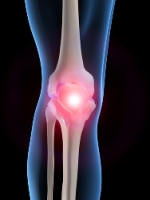AOSMI orthopedic surgeons have pioneered a new bloodless surgery protocol for joint replacement and other orthopedic procedures. Advanced Ortho Sports gives patients that they need in a number of areas, including sports medicine, joint replacement, spine care, fracture care, hand and wrist injuries, and urgent care. This new procedure is just another example of top quality care available from the orthopedic specialists.
With the use of tranexamic acid as well as advanced surgical coagulation techniques, blood loss and the need for transfusions have been significantly reduced. Since blood transfusions have many potential side effects and risks, patients are much more comfortable having surgery with the new technique which avoids the need for transfusions in the vast majority of patients.
In addition, patients feel better and more vigorous after surgery since they have more circulating oxygen in their blood and are less prone to anemia. This allows more surgeries to be performed without the need for hospitalization and intensive monitoring, resulting in significant cost savings.
For more information about orthopedic surgery at Advanced Ortho Sports, visit https://advancedorthosports.com/orthopedic-care.
 Physicians at Advanced Orthopedics perform minimally invasive, arthroscopic surgery using small cameras equipped with fiber-optic light technology to view damaged joints on a monitor screen. Inserted through a tiny incision in the skin that is less than one centimeter in size, these cameras allow arthroscopic surgeons to trim torn knee meniscus, repair rotator cuff injuries, treat bursitis of the shoulder and restore functioning of damaged knee cartilage . During the procedure, special fluid is pumped into the joint area to enhance visibility while clearing away any unnecessary tissue debris.
Physicians at Advanced Orthopedics perform minimally invasive, arthroscopic surgery using small cameras equipped with fiber-optic light technology to view damaged joints on a monitor screen. Inserted through a tiny incision in the skin that is less than one centimeter in size, these cameras allow arthroscopic surgeons to trim torn knee meniscus, repair rotator cuff injuries, treat bursitis of the shoulder and restore functioning of damaged knee cartilage . During the procedure, special fluid is pumped into the joint area to enhance visibility while clearing away any unnecessary tissue debris.
Advantages to arthroscopic surgery include:
- Reduced recovery time (many of these procedures are performed as out-patient surgery)
- In some cases, patients may only need a local anesthetic instead of general anesthetic
- Thirty minutes is the average time it takes to complete most arthroscopic knee surgeries
- Pain is minimal following surgery, with most patients requiring only ibuprofen instead of prescription pain medication to alleviate any discomfort
Arthroscopic surgery dramatically reduces joint tissue trauma and is conducive to the restoration of optimal muscle functioning. It is also utilized as a diagnostic tool to determine the cause of joint stiffness and pain or the extent of damage to joint ligaments.
Can You Benefit from Cartilage Replacement Surgery?
Chances are you probably won’t give much thought to the protective cartilage that cushions your bones until it wears down to the point that it becomes raw and painful. Each year, thousands of people must undergo surgery to repair torn cartilage because the pain interferes with their daily lives. Repair usually means shaving damaged cartilage, but many younger, more active patients are excellent candidates for cartilage replacement surgery. This exciting therapy aims to eliminate pain, restore function and reduce or delay the need for total joint arthroplasty. So, what exactly is cartilage, and how can it be damaged and repaired?
What is cartilage?
Cartilage is a rubbery, smooth substance found in every joint in your body. It serves to help bones glide smoothly within a joint and as shock absorption.
How can cartilage be damaged?
Your cartilage can be damaged through trauma such as twisting or direct impact; ligament injuries that make your joint unstable or loose resulting in damage to the joint surface cartilage; and poorly aligned joints placing excess pressure on cartilage. The damage can be painful, as well as limit everyday activities like walking.
What are your options for treatment?
While cartilage can be damaged in the hip, ankle, shoulder and elbow, the most common area of injury is the knee. Cartilage replacement in knee injuries is an excellent alternative to total knee replacement and especially promising for more active patients. Some of the treatment options involved in cartilage replacement surgery include:
- Arthroscopic and open cartilage replacement procedures
- Performed through small incisions, these are used to stimulate cartilage restoration, replace areas of damaged cartilage with healthy cartilage from elsewhere in the knee, replace damaged cartilage with donor cartilage and bone, or encourage knee cartilage regeneration using your own cartilage cells.
- Limited (partial) replacement of joint surfaces
Used instead of total joint replacement for older active patients
- Realignment procedures
Called osteotomies, this can be done to take pressure off of damaged and repaired areas of the joint.
Who can be treated?
Anyone from teens to middle-aged adults can be treated with the techniques that orthopedic surgeons use to repair or regenerate cartilage. The surgery can be performed at an outpatient surgery center or a hospital, depending on the procedure.
What happens after you’ve had treatment?
After you have cartilage replacement surgery in a joint, you must return to activity gradually. It will take time and patience, so don’t expect to return to the activities you enjoyed before your injury occurred. The treatment after surgery often requires specialized physical therapy, under the direct supervision of physicians.
If you’ve been suffering joint pain and are interested in treatment options beyond total replacement surgery, cartilage replacement surgery may be for you. An orthopedic surgery practice dedicated to the repair and restoration of cartilage, like the Cartilage Restoration Center in New Jersey, a division of Advanced Orthopedics and Sports Medicine Institute, can help. With Board-certified surgeons utilizing the latest techniques, you’ll be well on your way to returning to that active lifestyle you’ve been missing.
 Rotator cuff tears are a common source of shoulder pain in the active population. Although sports participation and trauma are common factors in the development of shoulder pain, rotator cuff tears are also frequently caused by the normal degenerative aging process of the shoulder. READ MORE.
Rotator cuff tears are a common source of shoulder pain in the active population. Although sports participation and trauma are common factors in the development of shoulder pain, rotator cuff tears are also frequently caused by the normal degenerative aging process of the shoulder. READ MORE.
 Joint replacement surgery has increased in popularity over the last five years. People have become more involved with sports, exercise, and recreational activities and are staying active later in life. READ MORE.
Joint replacement surgery has increased in popularity over the last five years. People have become more involved with sports, exercise, and recreational activities and are staying active later in life. READ MORE.
 “I think people are hesitant to undergo surgical procedures, especially joint replacement, for fear of pain. However, with the right approach to anesthesia and medications we can actually stop pain before it starts,” says Alan S. Nasar, MD, FAAOS, board-certified orthopedic surgeon. READ MORE
“I think people are hesitant to undergo surgical procedures, especially joint replacement, for fear of pain. However, with the right approach to anesthesia and medications we can actually stop pain before it starts,” says Alan S. Nasar, MD, FAAOS, board-certified orthopedic surgeon. READ MORE








